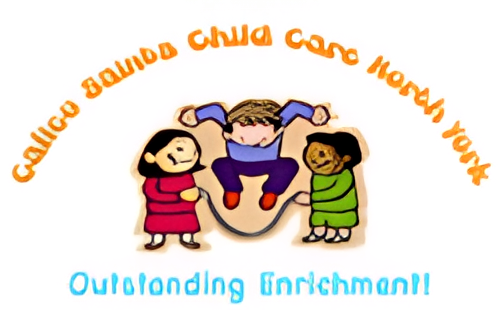Introduction to Childcare Options
When you become a parent, figuring out childcare can feel like a daunting task. Whether both parents are working, one is studying, or you just need a break once in a while, knowing your childcare options can ease a lot of stress. Think of childcare as not just a service but an investment in your child’s growth and your peace of mind. Broadly, you have a few choices – daycare centers, family daycares, nannies, and after-school programs. Each comes with its own set of pros and cons. Daycare centers are great for social interaction, while family daycares might offer a homier environment. Nannies provide one-on-one care but can be more expensive. After-school programs are perfect for school-aged kids needing engagement beyond school hours. Remember, the best choice depends on your child’s needs, your family situation, and what feels right for you. It’s all about finding that sweet spot where your child is happy, safe, and flourishing.
Childcare for Infants: What You Need to Know
When it comes to caring for infants, you’ve got a few options, but each one demands your full attention to choose wisely. First off, remember, infants need constant care. We’re talking round-the-clock attention, so whatever option you lean towards, make sure it promises that level of dedication.
Option one could be daycare centers. These spots are licensed, which gives you a peace of mind about safety and standards. They’re structured, following a set routine that includes nap times, which is good for babies who thrive on consistency. However, the downside? It can be pricey and may not offer that one-on-one care your infant might need.
Then, there’s in-home daycare. This setting is smaller, feels more personal, and can offer a bit more flexibility. It’s sometimes less expensive than larger centers, but, again, make sure it’s licensed and check out the caregiver-to-child ratio.
Lastly, hiring a nanny is the ultimate personalized care option. Your infant gets one-on-one attention in the comfort of your own home. It’s the priciest route, yet some parents find the customized care and convenience unbeatable.
Regardless of what you choose, the key is thorough vetting. Visit the place or interview the caregiver. Ask hard questions about their experience, emergency procedures, and caregiver qualifications. Your infant’s safety and comfort come first, so trust your gut, and choose what feels right for your family.
Exploring Toddler Childcare Solutions
When it comes to toddler childcare, you’ve got a few different paths to consider. First off, daycares are a go-to for many parents. They’re like a big classroom where toddlers get to play, learn, and nap together. Costs can vary widely depending on where you live, but expect to budget for this. Another option is a nanny. A nanny comes to your home and looks after your kiddo there. It’s more personal, but generally more pricey. If you’re tight on cash but still value that one-on-one care, a share-care setup might work. This is where two or more families split the cost of a nanny. Lastly, there’s pre-school. It’s a bit like daycare but with a bigger focus on learning and getting ready for kindergarten. It’s perfect for toddlers who are eager to explore and learn. Remember, the best choice depends on what feels right for your family, your budget, and your toddler’s needs.
Preschool Age Childcare: Preparing for Education
When we talk about preschool age childcare, we’re diving into a critical phase. This phase isn’t just about watching over kids. Nope, it’s about laying down the foundation for their educational journey. You’re not just picking a spot where your kid will spend their day. You’re choosing an environment that will shape their learning habits, social skills, and curiosity for life.
Let’s break it down. At this stage, children are sponges. They soak up everything. That’s why the key is to find a place that offers a mix of play and structured learning. What we’re aiming for is a balance. Too much play and they might not get the discipline needed for school. Too much structure, and we risk snuffing out their natural curiosity. The golden rule? Look for a place that sparks joy in learning.
Another thing to keep an eye out for is the social aspect. Preschool is a social classroom. It’s where kids learn to make friends, share, and navigate the complex world of human emotions. A good preschool program will put a strong emphasis on developing these interpersonal skills alongside academic basics.
Cost-wise, prices vary widely. But remember, investing in a quality preschool program is like placing a bet on your child’s future success. Don’t just go for the cheapest option. Consider what you’re getting for the price. A stellar program can pave the way for a love of learning that lasts a lifetime.
In summary, choosing a preschool is about finding a place that offers the right mix of play, learning, and socialization. It’s a decision that deserves time and thought. After all, the best choices in preschool childcare are those that look forward to the future while embracing the vibrant world of childhood.
School-Age Childcare for Busy Parents
Choosing the right childcare for your school-age child is crucial for busy parents. This age group, typically from 5 to 12 years, needs an environment that supports their growing independence and educational needs. Unlike toddlers, school-age kids are in school for most of the day, but what about before school, after school, and school holidays?
Here’s the breakdown: Before and After School Programs often run by schools or local community centers, offer a mix of homework support, recreation, and social interaction. They’re perfect for filling the gap between school hours and your work schedule. School Holidays and Summer Camps can be a lifesaver during longer breaks. These programs keep kids engaged with educational activities, sports, and crafts. Don’t forget about Sports and Clubs, great for physical activity and social skills development. Finally, consider a Reliable Babysitter or Nanny for more personalized care or irregular schedules.
Finding the right fit involves balancing cost, convenience, and your child’s interests. Always check the program’s licensing, staff qualifications, and reviews from other parents. Remember, the goal is to find a safe, enjoyable space that matches your child’s energy and curiosity.
The Role of After-School Programs in Childcare
After-school programs aren’t just a convenient option for busy parents; they’re a crucial part of childcare that supports a child’s development beyond the regular school hours. Think of them as an extension of the classroom. It’s not just about keeping kids safe until their parents pick them up. These programs offer a structured environment where kids can explore new interests, get help with homework, and build social skills. They’re places where children can make friends, learn about teamwork, and even discover new talents they didn’t know they had. Plus, engaging in different activities can boost their self-esteem and academic performance. So, after-school programs do more than just fill in a gap; they play a significant role in rounding out a child’s education and social experiences.
Summer Camps and Seasonal Childcare Options
Summer camps aren’t just places where kids have fun; they’re a real game-changer when it comes to balancing work and family life during seasonal breaks. These programs come in all shapes and sizes – day camps, overnight camps, sports-focused, arts-centered, and everything in between. This variety means you can find a camp that fits your child’s interests and your schedule. One of the beauties of summer camps is their flexibility. You can sign your kid up for a week, a month, or the whole summer based on what works best for you.
Now, let’s talk cost. It varies widely. Community centers and churches might offer more affordable options, while specialized camps focusing on, say, robotics or horseback riding, could have a higher price tag due to the specialized equipment and instruction they offer. But remember, this isn’t just daycare. It’s an investment in your child’s development. They’ll learn new skills, make friends, and build independence. Plus, many camps offer financial aid or payment plans, so don’t let the sticker price scare you off.
And for those times when summer camp isn’t in session, look into community programs. Many towns offer seasonal activities designed to keep kids engaged and safe when school’s out. These can be more cost-effective and are a great way to keep your kids active and involved in the community.
In conclusion, summer camps and seasonal childcare options are more than just a way to keep your kids busy. They’re an opportunity for growth, learning, and fun. Start exploring early to get the best spots and deals, and make your summer planning a breeze.
Understanding the Costs of Various Childcare Options
When you’re weighing childcare options, it’s crucial to understand that costs can swing widely based on several factors. The type of care, location, and your child’s age play big parts in how much you’ll fork out. Let’s break it down a bit.
Home daycare tends to be more budget-friendly. You’re looking at an average of (300 to )800 a month. The vibe is more homely, and the groups are smaller. But, it’s key to check they’re licensed and have good references.
Daycare centers step up the price a bit, generally running from (400 to )1,600 a month. They’re usually more structured, with specific educational programs. Plus, they’re regulated strictly for safety and quality.
Nannies are top-tier in cost, often between (2,000 to )3,500 a month. The perk? Personalized, one-on-one care for your kid right in your home. The cost can go up based on their experience, duties, and if you live in a high-cost-of-living area.
Lastly, there’s after-school care for the older kids, which typically hovers around (200 to )600 a month. It can be a lifesaver for working parents, offering a safe space for kids until you can pick them up.
Remember, these numbers are a ballpark. Costs vary widely by region and specific needs. Always do your homework before choosing. Quality care that fits your family’s budget and needs is out there.
How to Choose the Right Childcare for Your Family
Picking the right childcare is akin to finding the right pair of shoes; it has to fit well for everyone to be comfortable. First, identify your priorities. Is location paramount? Does your child need special attention or a particular educational philosophy? Consider these factors. Next, think budget. Quality care isn’t cheap but varies widely by type and location. Home daycares might be less costly than centers but check what’s included. Visit potential spots. Get a feel for the places. Observe how staff interact with the kids. Are they engaging? Is the environment safe and stimulating? Trust your gut. If something feels off, it probably is. Lastly, do your homework. Check references and state violations. Finding the perfect childcare spot is a process but think of it as investing in your child’s future. With the right approach, you’ll find a great match.
Conclusion: Navigating Childcare From Infants to Pre-teens
Deciding on childcare is no small feat. It’s a decision that weighs on many parents and guardians from the moment they consider starting a family all the way through to the pre-teen years. Each stage of your child’s life brings new challenges and requirements, from ensuring your infant is in safe, nurturing hands to finding engaging, educational environments for your energetic pre-teen. The good news? You’ve got options. From family daycare to formal childcare centers and even after-school programs tailored for older kids, there’s a fit for every family’s needs and budget. Remember, the best choice depends on what works for your child and your family situation. Costs vary, and so does quality. Take the time to visit, ask questions, and really get the feel of a place. Think about convenience, but don’t forget about your child’s comfort and happiness. It’s a journey, but with the right information and a clear understanding of what’s available, you can navigate the world of childcare confidently. Let’s put it this way: knowing your options makes you equipped to make the best decisions for your little ones, no matter their age.





